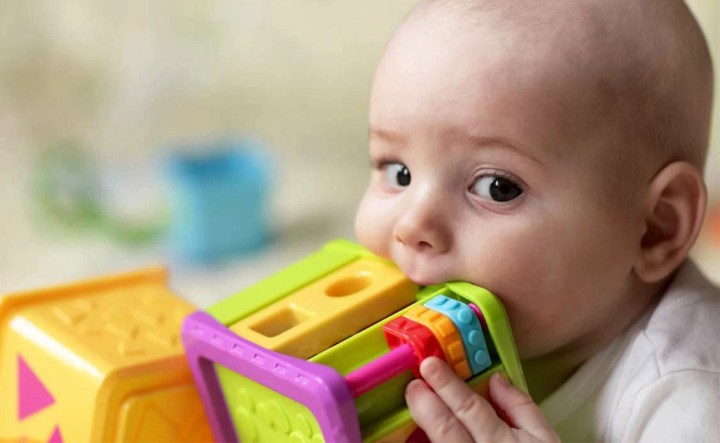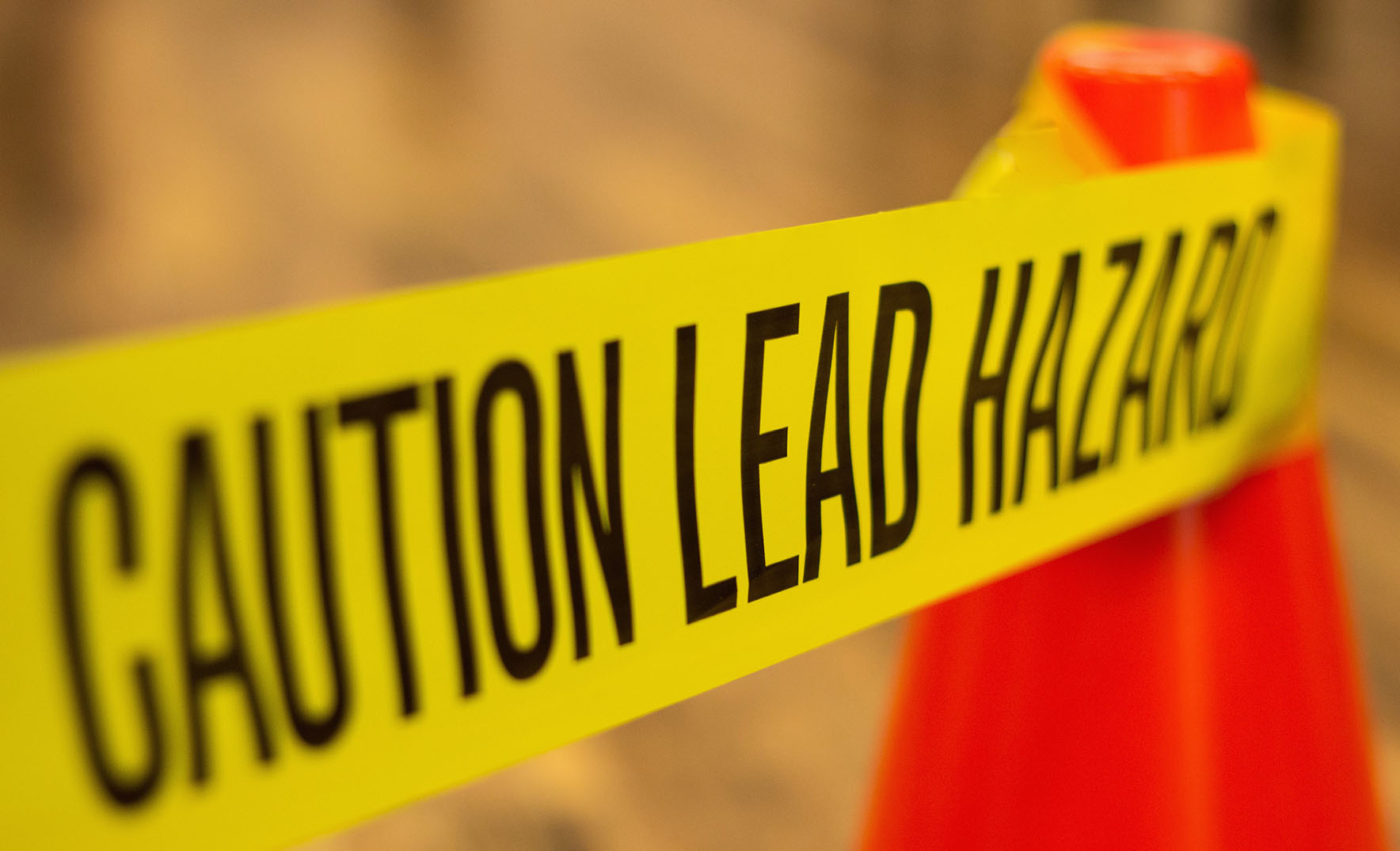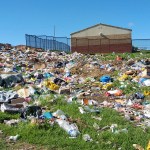BHEKISISA CENTRE FOR HEALTH JOURNALISM
You could be buying poisonous lead paint – and no one would be charged for it

The government is investing in monitoring lead levels in paint, but experts and industry groups say that there’s no plan for dealing with offenders.
The Health Department has confirmed to Bhekisisa that while health inspectors often find that paint in South Africa contains illegal amounts of lead – a toxic metal that can damage children’s brains – it isn’t aware of paint producers or retailers ever having faced legal action.
In October, the department received lead-testing equipment worth R2.2-million to check that imports of paint don’t contain more than 0.06% lead (the most allowed by 2009 laws for any household paint sold in the country).
The eight hand-held lead detectors, or X-ray fluorescence (XRF) analysers, will be given to 62 trained Port Health officials to stop paint with illegal lead levels from coming into the country (whether it’s applied to something or in a tin), said department spokesperson Foster Mohale.
This is in the run-up to new draft legislation that, if put in place, would cut the legal threshold for lead in new paint to 0.009%. This is less than a sixth of the original limit and would bring South Africa’s regulations in line with international guidelines for lead paint. The new regulations would apply to all paints, including those used in industrial settings.
The announcement that the rules might change was made in October 2021. The department’s legal team is working on including public comment in the regulations, before they are sent to the state’s advisers for approval. Mohale says the process could take up to three months before the regulations are published as law.

An industry association says that although health inspectors have previously found paint in South Africa with too much lead, the government doesn’t take any action against offenders. (Photo: iStock)
But industry experts, including the South African Paint Manufacturers Association (Sapma), have a longstanding worry that despite the government’s investments in testing equipment and tightening the law, very little has been done to enforce existing regulations.
Municipal and provincial health inspectors have, for instance, been using XRF analysers to monitor lead in paint on local goods since 2015. They point the gun-like scanner at an object and the device shows how much lead is on the surface, explains Angela Mathee, the chief specialist scientist in the South African Medical Research Council’s (SAMRC) environment and health research unit.
Read in Daily Maverick: “Deadly weights – lead fishing tackle is causing St Lucia’s crocs to lose teeth and suffer anaemia”
If they detect illegal lead levels in paint (and it’s confirmed with a laboratory test), Mohale says they’re allowed to confiscate the item or product, limit its supply or take the paint maker to court.
Sapma said in 2021, however, that the government regularly finds high levels of lead in paint readings at hardware shops, yet no legal action seems to be taken against those “who arrogantly flaunt – and are still flaunting – the country’s laws”.
What makes lead dangerous?
Lead is a heavy metal that has, for many years, been added to paint to make it look brighter and last longer. Because of its toxic effects, however, some countries placed legal limits on its use going back to 1909, when Austria, Belgium and France banned lead-based interior paints (100 years before South Africa took action).
People who consume lead – whether by eating or touching, or breathing in lead dust – can develop heart disorders, kidney problems, tiredness and memory loss, especially as the metal builds up in the body over time.
Visit Daily Maverick’s home page for more news, analysis and investigations
Because children explore the world by putting things in their mouths, they are more likely to consume lead that might be in flakes of old paint. Once in their systems it can harm their developing brains, hindering their performance at school and increasing antisocial and violent behaviour.
In South Africa, researchers have found lead paint on house walls, children’s toys and playground equipment such as slides and see-saws.
In response, the 2009 law was supposed to reduce the amount of lead that kids are exposed to, but years after the new rules kicked in, inspectors still found illegal levels when testing paint on toys, furniture and walls at childcare facilities in Johannesburg, the West Rand and Ekurhuleni.
Unpublished research by the Health Department and the SAMRC also found that, in 2012, about four in 10 paint samples had lead levels over the legal limit, says Mohale – without any known consequences for the producers.
Good enforcement pays, because it’s cheaper than removing old lead paint
Not only is the government failing to punish manufacturers when it finds hazardous lead paint, it also has no plan to remove or manage it, experts say.
“New products are expected to meet the new standards, but old paint in homes and other buildings is not regulated,” explains Rajen Naidoo, a professor of occupational and environmental health at the University of KwaZulu-Natal.

In South Africa, researchers have found lead paint on house walls, children’s toys and playground equipment such as slides and see-saws. (Photo: iStock)
Removing existing leaded paint is expensive because it has to be completely stripped by trained professionals and then disposed of in special waste dumps that can handle hazardous chemicals. A cheaper (but more temporary) solution is to seal lead paint with certain coatings or plastic.
In December 2021, the US announced plans to beef up measures like this and set aside close to R80-billion to remove or manage lead paint and other lead fixtures (such as pipes) in low-income households.
Read in Daily Maverick: “Polyfluoroalkyl chemicals contaminate our food, clothes, environment and even bloodstream — tight regulations must be implemented”
But this wouldn’t be feasible in South Africa, says Rachel Silverman Bonnifield, a researcher at the Centre for Global Development, where she’s studying global lead exposure.
She argues that, for now, the first action South Africa should take in combating lead paint is to enforce its own laws.
Bonnifield explains that the cost of removing old lead paint from walls in low- and middle-income countries such as South Africa will probably be out of reach. But what will make a real difference is “to pass and enforce laws that ban lead in new paint”. DM/MC
This story was produced by the Bhekisisa Centre for Health Journalism. Sign up for the newsletter.



















 Become an Insider
Become an Insider
Comments - Please login in order to comment.